Quick Links:
Zen
and Art Home Disclaimer
Errata
Parts and Parts
Vendors
Truck Sales Service
and Repairs
Engine Fuel Hydraulics Radiator and Cooling
Air System Brakes Wheels Tires Electrical
and Batteries
Transmission Clutch
Axles Hubs Body Air
Conditioning
Tools
Safety
Air System
When it comes to operation of your mog, nothing is
more critical than the air system. Without air pressure,
you are going nowhere. To put this in context, the air
system is responsible for the ability to remove the parking
brake; the service brakes; shifting assist; engagement of the
four wheel drive; engagement of the differential locks.
And, if your truck is so-equipped, lack of air will also defeat
the deep water crossing system. The air system is a weak
point in the Unimog.
The parking brake setup is a fail-safe mechanism so that if the air system fails, you will be able to stop the truck. It is possible to defeat this mechanism, but it requires a strong steel pry bar, pliers and some time. This process is outlined in the shop manual but before you attempt this, realize that your truck is going to roll and since you have no air, you also have no service brakes either so you will not be able to stop the truck. Block all the wheels on both sides before attempting this action.
The shop manual has a diagram of the air system, but it is rather cryptic. In words it is like this: input air is taken from downstream of the engine air filter. The air compressor is driven by the engine either via a belt or from the cam shaft of the motor (more on that later). The output of the pump goes through a thing called an "unloader" which is basically a vent that attempts to separate air and any oil that has found its way into the system. The unloader also dumps any excessive pressure to prevent the tanks and other components from being damaged. The output of the unloader goes to the 4-way valve and then to the dual tanks. Some trucks have 2 big tanks and one small tank as well as another canister. The extra tank and canister is part of the air dryer subsystem that was added to later mogs. The canister is the dryer and the small tank is the back-flow pressure source to allow the system to purge itself. In the mix of this rats-nest of plumbing are a few pressure regulators.
Most mog owners I know, myself included, have had
air compressor failures. There are two kinds of
compressors, both engine driven. The belt drive sits on a
large mount attached to the engine block. These seem to
fail most frequently and my guess is that it is due to a
combination of lube oil supply and inability to dissipate
sufficient heat to the outside world. These belt-driven
units come in AT LEAST 2 versions, one with a radiator coolant
connection and one without. The belt-driven units are
referred to as the "high volume, high pressure" pump. All
the compressor failures that I am aware of were of the
belt-driven type.
The second kind is attached to the engine block. This unit is driven by the cam shaft and is lubricated directly by the engine. Heat is dissipated through the engine block.
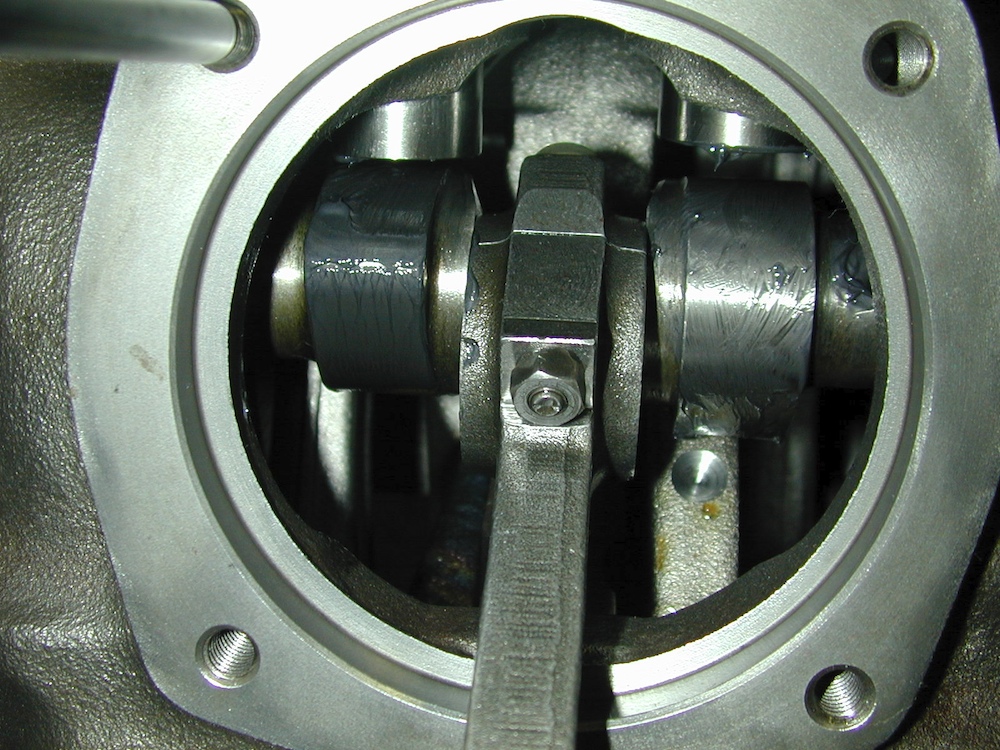
The photo above shows the air compressor connecting rod hooked to the cam shaft before the unit was assembled.
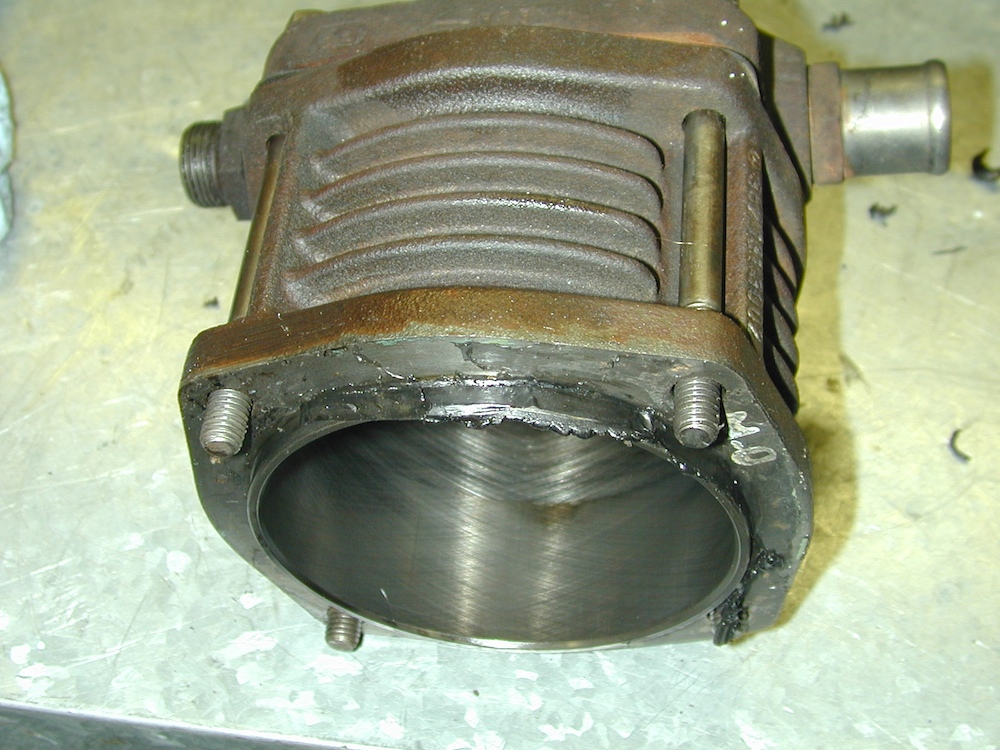
The compressor case is just a sleeve with simple reed valves
on top. This bolts onto the block. The black junk
is gasket sealer that will be removed and re-applied before
final installation.
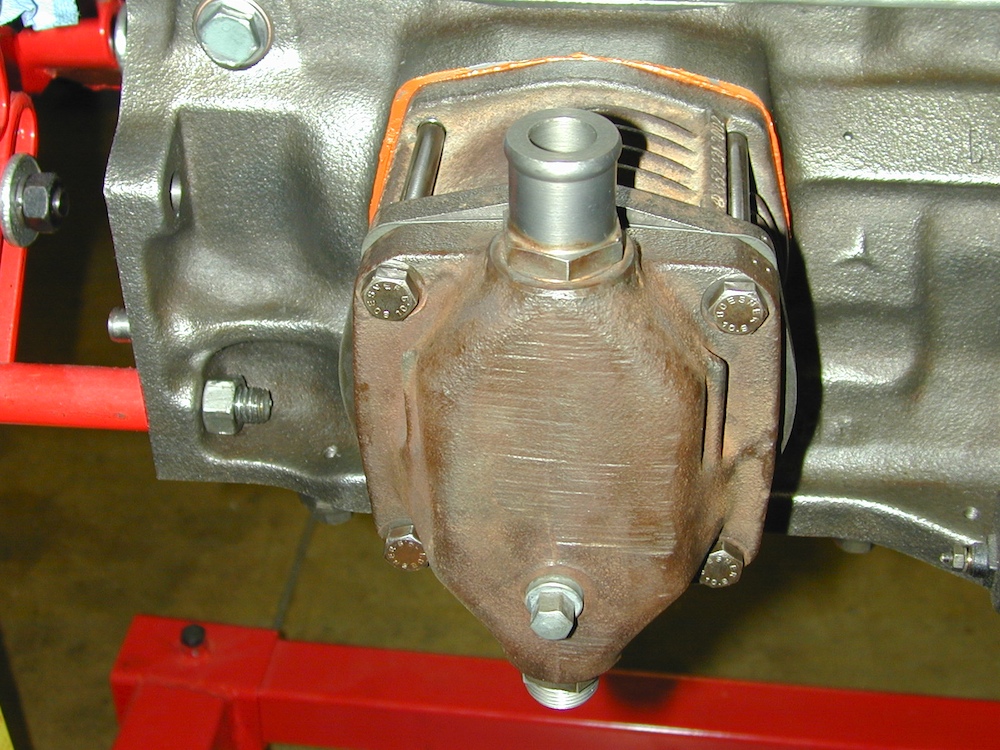
The compressor unit attached. The input is at the top,
high pressure output on the bottom (with the threads).
My belt-driven air compressor was the very first thing to fail on my mog after I bought it. This was before I knew of the online mog community. I had the truck serviced by Freightliner and the cost of the block mounted unit was about $250 and it was in stock. The cost of the Unimog-specific belt-driven compressor was about $1200 and a six week wait. Since both would work for my application, and the decision seemed obvious, my only question to the service guy was "have you EVER seen a block-mounted unit fail?". His shop foreman's answer was "No, never in the 10 years I have been here". Done. The block mounted unit does not put out the same volume of air, but the pressure is the same. In the case of my mog, the pressure was 18 Bar (one Bar = 1 atmosphere = 14.5 psi) about 260 psi. It is true that when the tanks are low, it takes a bit longer to build up pressure than the belt mounted unit, but I never had another failure on the air pump. Other air failures, but no pump failures.
The pump is only one part of a reasonably complex system. In my case, when the compressor was replaced with a non-stock configuration unit, a mapping hose had to be fabricated. This hose ran great for 12 years, then finally failed when we were in Victoria, BC. Vibration eventually fatigued the stainless steel braiding.
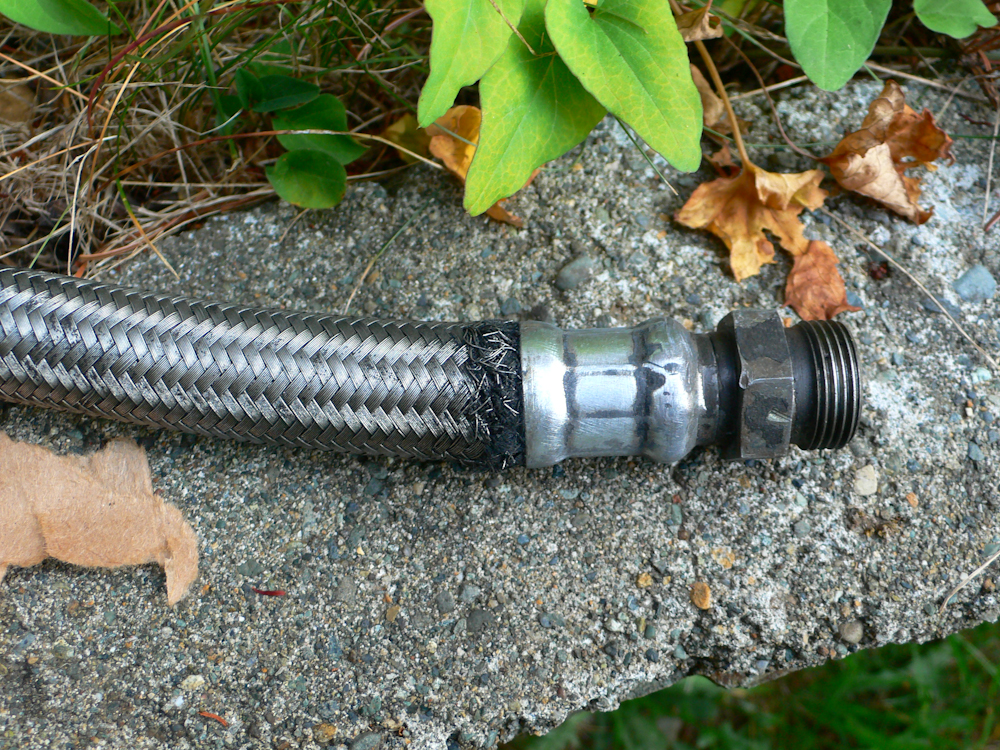
It took 12 years, but it did finally fail. Vibration wore out the interface between the connection and the steel braid allowing a leak that vented the output of the compressor.
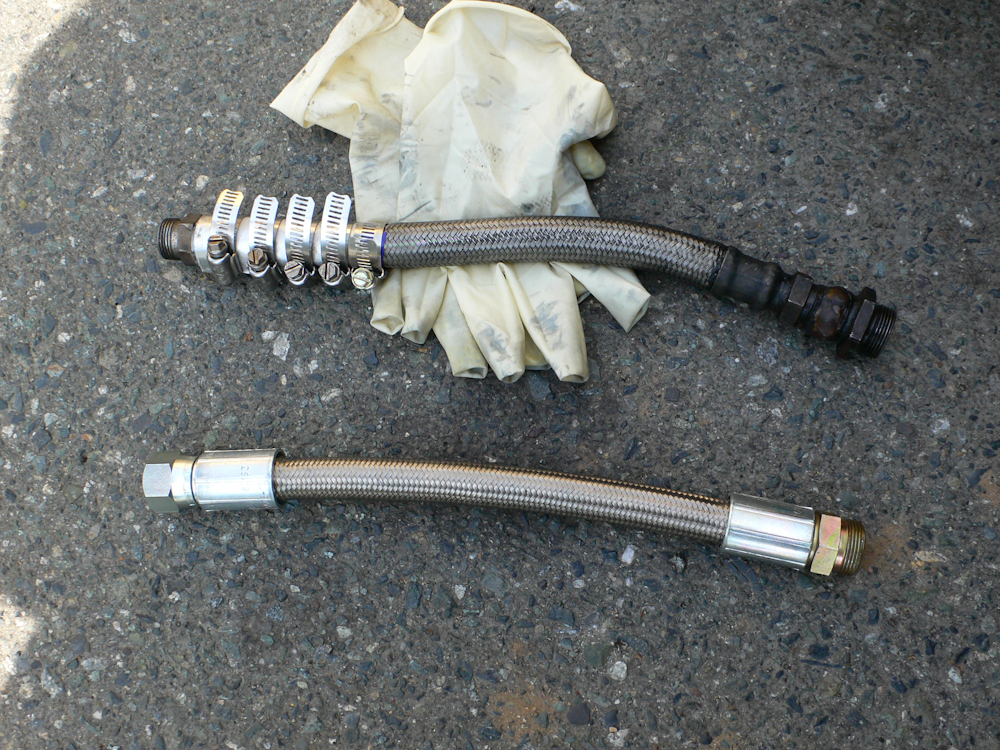
We were able to get a new hose fabricated at a marine supply
shop. This one had better strain relief at the ends and
should last for another 12 years with no sweat.
12 years is a reasonable service life, but I think the message here is a good visual inspection may have discovered this issue before it went critical. The problem was that this hose was totally covered in oily dirt and the photo above shows the cleaned up hose.
The Unimog brake system is called
air-over-hydraulic. This means that the primary control
is air but the air serves as a booster for the final hydraulic
pressure that actuates the brakes. On the mog, the brake
modulator is on the firewall in the engine compartment.
It is mechanically connected to the brake pedal. When
you press on the pedal, it opens and closes valves that
control the boost pressure going to the master cylinder.
That valve can be contaminated with debris from the air
system. When it is contaminated, several things may
happen, neither of them good. First is the brakes may
not actuate at all or only partially actuate. Second,
they brakes may not release fully causing the brake pads to
drag and build up heat in the wheels. This will not only cause
damage to the brake pads but may boil out your brake fluid
causing you to lose the ability to brake at all and possibly
damage the wheel hub bearings and gears.
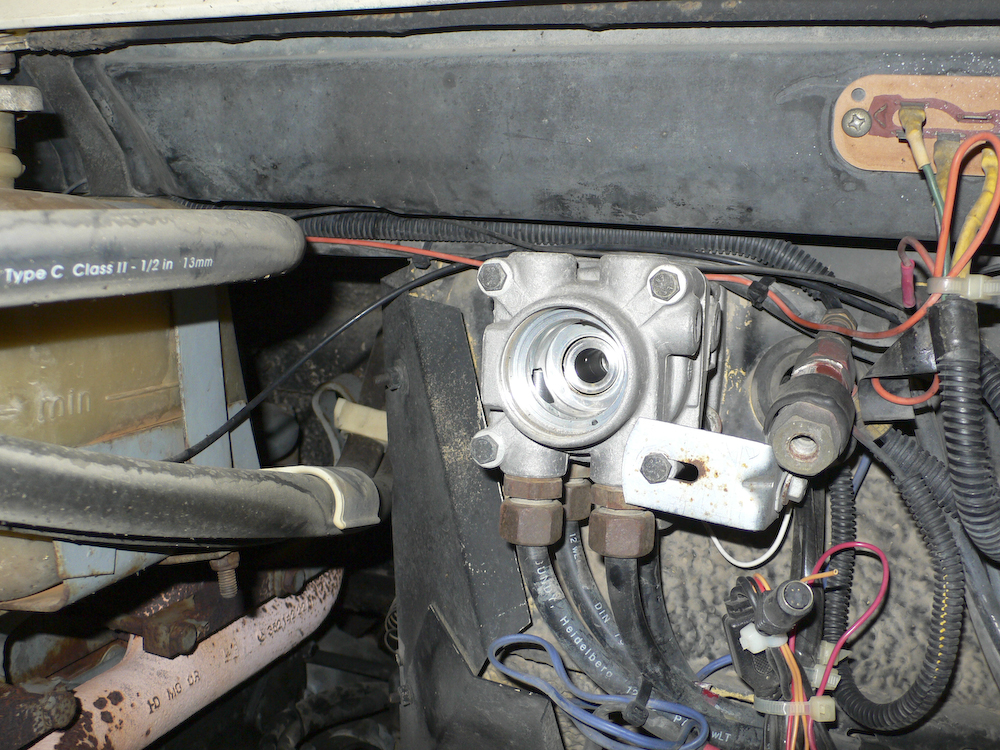
This is the modulator on the firewall.
I have suffered both of these scenarios. You can get into the valve on the firewall by removing the snap ring and being mindful that the stuff underneath is under spring pressure and will fly apart when you remove the snap ring, you can see inside. If you see debris, usually black particles that look like coffee grounds, you have crap in your air tank. These particles can impact the ability of the brakes to do their job, so you need to eliminate the cause.
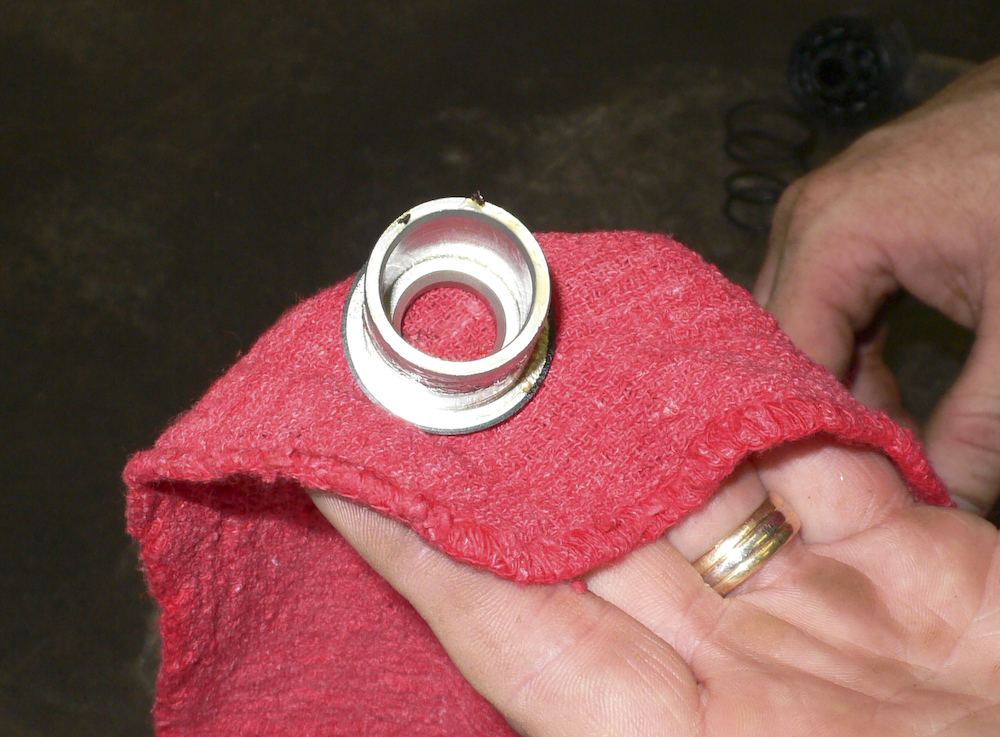
The particles on the piston are the culprit.
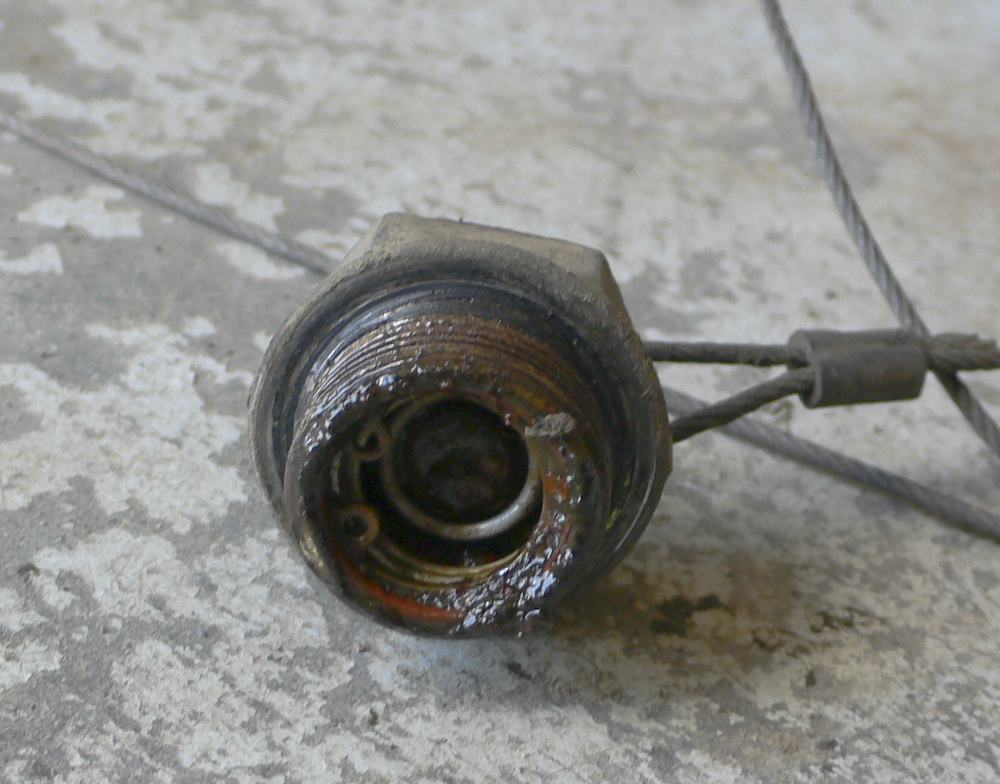
This oil-dust contamination was inside the air tank. This is the vent port.
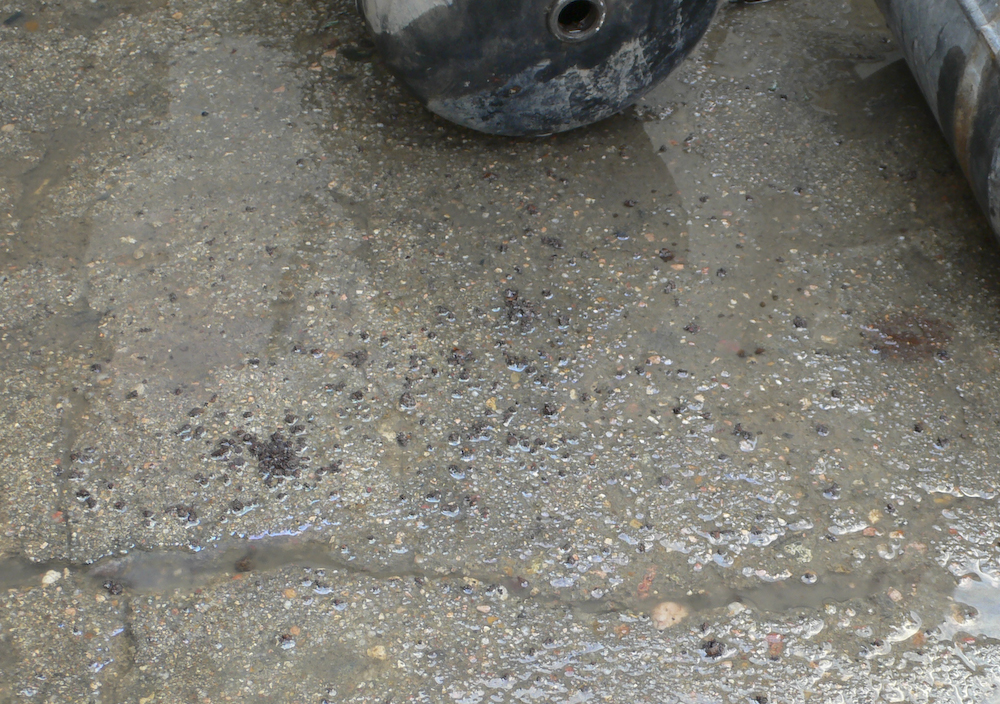
The black chunks on the ground came from inside the air tank.

You can see some of the crap that had accumulated in the unloader valve. To the best of my knowledge, this valve was original on my truck which at this point was about 28 years old.

Note the gray scum inside this air port. This is oil
mixed with water and dust. Water comes from moisture in
the air and you should drain your air tanks regularly.
In my opinion, the problem came from small amounts of water and oil coming from the compressor accumulating in the tanks. Then, over time, the oil clots up and in conjunction with dust forms the granules that clog the system. When I inspected the inside of the tanks, there was crud everywhere. I had a number of contamination-related air system failures that were traced back to rust and accumulated oil in the 2 air tanks. We cleaned them, but there was still sufficient junk to cause problems. The solution was to replace both tanks, the 4-way, unloader and pressure regulator. That conclusively addressed the problem.
As a side note, trucks that have the air dryer are much, much less prone to air system problems. The dryers were standard on most of the German ex-mil trucks that we saw in the aftermarket. They are still susceptible to air compressor failures, but at least the balance of the system is reliable.
From a maintenance standpoint, the best things to do are first and foremost use the air tank vent to drain out moisture every day. Next, say once a year, pull the drain plug out and stick your finger in the tank and see what, if anything, is there. If there is a thick coating of oily crud, you should be thinking about pulling the tank and getting it steam cleaned. If the oil persists, then the likely cause is a failing ring on the air compressor. These compressors have rebuild kits and depending on which type of compressor you have, the rebuild my be straightforward. On the block mounted compressor, the whole assembly comes off with 4 bolts and it can be easily accessed. Getting to those bolts, however, may be a challenge depending on what else is in your engine compartment.
See the shop manual for the steps required for
the rebuild.
Quick Links:
Zen
and Art Home Disclaimer
Errata Parts and Parts
Vendors
Truck Sales Service
and Repairs
Engine Fuel Hydraulics Radiator and Cooling
Air System Brakes Wheels Tires Electrical
and Batteries